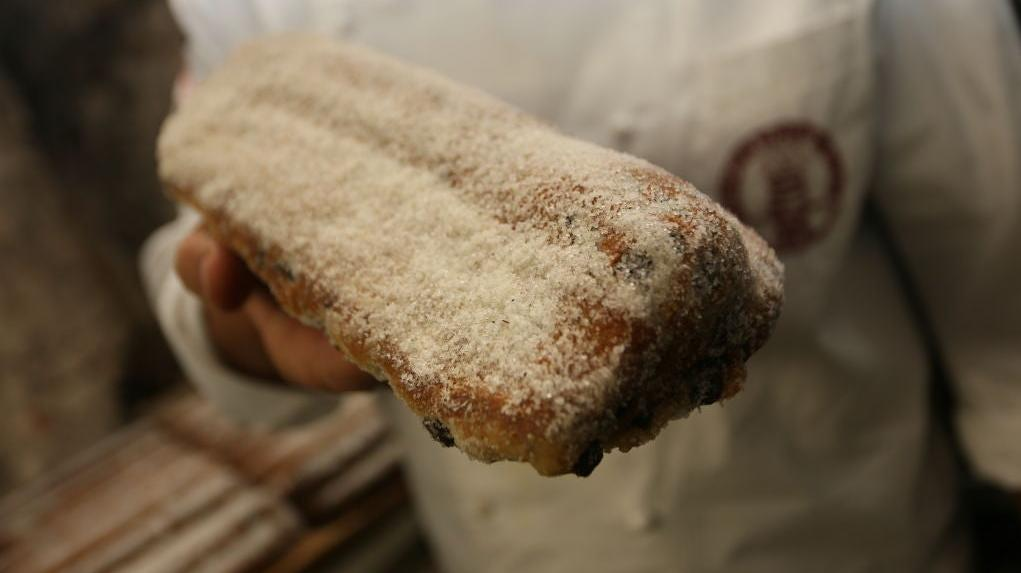A Sugar-Crazed King Once Forced Bakers To Bake A 4,000-Pound Stollen
In 1730, a European ruler wanted to make sure there was enough stollen for everyone.
It ain't Christmas 'til somebody busts out the stollen. We've written about this dense, lightly frosted fruit bread before, and we firmly believe that it's up there with fruitcake in its status as an unfairly maligned holiday baked good. For whatever reason, our society's deeply-held prejudices against dried fruit keep treats like fruitcake and stollen from getting their due. But it wasn't always that way. Centuries ago, a European ruler ordered bakers to prepare a 4,000-pound stollen so his entire court could enjoy a slice.
The history of stollen
Before we dig into the Polish king's mega-stollen, let's review the history of this tasty holiday treat. Stollen is likely to have originated in Germany, first appearing in a 1329 document from Naumburg an der Saale, Saxony. (Some say the recipe originated as part of a baking contest offered by the Bishop of Nauruburg, but it's unclear who, exactly, was responsible for its invention.)
Mysterious inventor aside, stollen gained traction as a German holiday tradition, as the bread's oblong shape was meant to symbolize a certain holy infant wrapped in swaddling clothes. (If I gave birth to the Messiah, I'd want his likeness enshrined in bread, too.)
Back in the day, stollen was baked in dense loaves containing little more than flour, oats, and water. That's because it's traditionally baked during Advent, the five weeks of Church-sanctioned restriction leading up to Christmas. With that in mind, the Catholic Church forbade the use of butter, forcing stollen bakers to get creative—until the early 1700s, when one Augustus II the Strong (hell of a name) petitioned the Church to allow his bakers to use butter without paying a fine.
(Quick note on Augustus II the Strong here: This guy was the king of Poland, the grand duke of Lithuania, and the elector of Saxony, but he still found a moment to petition the Pope in pursuit of better baked goods. All hail Augustus the Strong!)
Anyway, Augustus got his wish. The Church hunkered down and agreed to allow the use of butter to craft a superior stollen. Then, in 1730, Augustus commissioned the Bakers' Guild of Dresden to create a stollen big enough for everyone—specifically, a 4,000-pound stollen containing 3,600 eggs and roughly 2,200 pounds of flour.
I love everything about this story. A royal gentleman with such an extreme sweet tooth that he had to take it up with God Himself? An extreme baking project? The spirit of sharing? Safe to say this story has stollen my heart. Eek, sorry!
